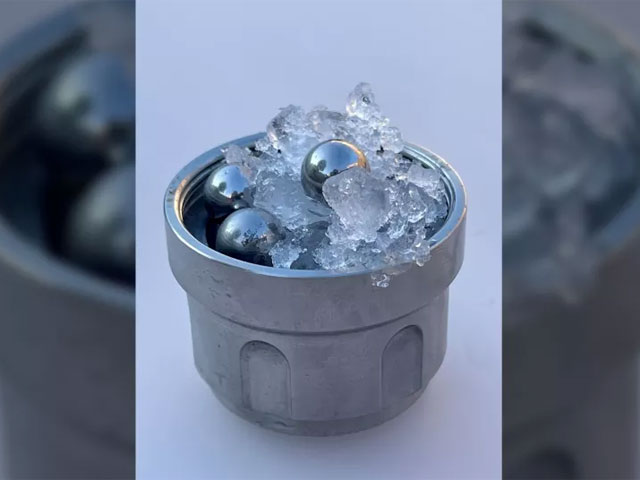London: Scientists have created a new type of ice that can neither float nor sink while resembling liquid water instead of frozen water.
This new type of ice is amorphous, which means that it is not like normal crystalline ice, but the irregular arrangement of its molecules makes it look like liquid water.
Researchers believe that icy moons of planets in the outer Solar System, such as Jupiter, may experience normal ice-breaking forces caused by tidal forces on these planets. Scientists at University College London (UCL) and Cambridge simulated these conditions to use for the new drug.
Scientists believe that if this ice is there, it could possibly contain signs of space life in cracks in the ice sheets, which is one of the many characteristics of the new ice that is characteristic of the ice formation process. Duran stores a large amount of energy within itself, a large amount of which is released during ice loss.
Senior author Professor Christoph Salesman from University College London said that water is the basis of life, our existence depends on it, space missions have been sent to search for it, but it is not considered correct from a scientific point of view. went.
He said that scientists know about 20 crystalline types of ice, but only two types of amorphous ice known as high-density and low-density ice were known so far.
This new type of ice is called medium density amorphous ice.
(function(d, s, id){
var js, fjs = d.getElementsByTagName(s)[0];
if (d.getElementById(id)) {return;}
js = d.createElement(s); js.id = id;
js.src = “//connect.facebook.net/en_US/sdk.js#xfbml=1&version=v2.3&appId=770767426360150”;
fjs.parentNode.insertBefore(js, fjs);
}(document, ‘script’, ‘facebook-jssdk’));
(function(d, s, id) {
var js, fjs = d.getElementsByTagName(s)[0];
if (d.getElementById(id)) return;
js = d.createElement(s); js.id = id;
js.src = “//connect.facebook.net/en_GB/sdk.js#xfbml=1&version=v2.7”;
fjs.parentNode.insertBefore(js, fjs);
}(document, ‘script’, ‘facebook-jssdk’));



